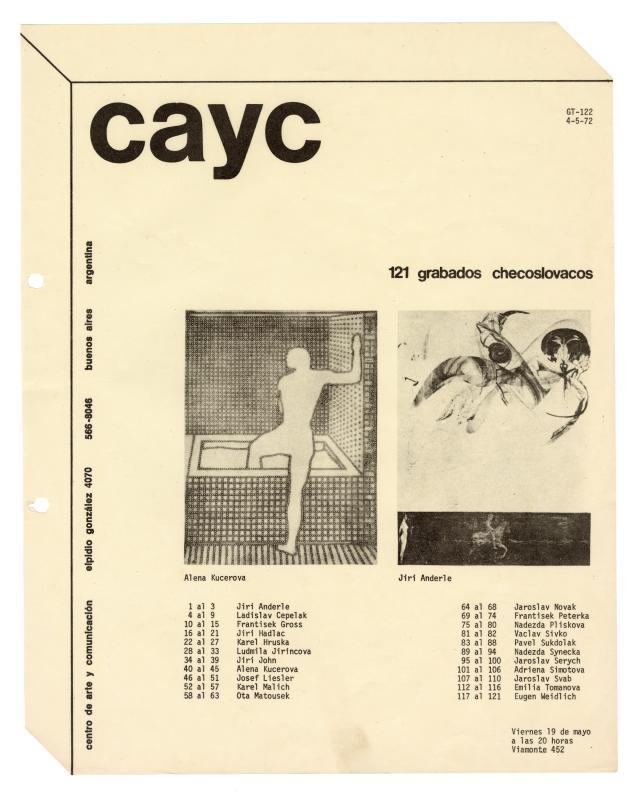Ever since it was founded, the CAYC (Centro de Arte y Comunicación), helmed by the cultural promoter, artist, and businessman Jorge Glusberg, was intended as an interdisciplinary space where an experimental art movement could flourish. The establishment of collaborative networks connecting local and international artists and critics played an important role in this process. The exhibitions shone a light on these exchanges, in which overviews of trends or individual artists provided an introduction to the innovations of international contemporary art and made Argentine and Latin American artists better known on the global scene.
The desire to forge close ties between Latin American and Eastern European artists was a basic component of the CAYC’s carefully planned strategy for international exchange. It involved “joining forces” with art scenes in what were considered Third World countries, which, in Glusberg’s view, would lead to the creation of art that reflected the problems these countries had in common.
The organization of this exhibition of works by Czech printmakers and the center’s collaboration with the Narodni Galerie (National Gallery) in Prague can be seen as part of a move to forge ties with countries in the socialist bloc (Eastern Europe). It was a significant step under the circumstances, given the Cold War and the dissemination throughout Latin America of the Theory of Dependence, which explained that the poverty the region’s countries were experiencing was a result of the oppressive policies of the major world powers.
A similar set of works from the same collection was shown at the CAYC in Buenos Aires in May 1972 (GT-122; doc. no. 1476408). On that occasion, a text in the newsletter (GT-121; doc no. 1476407) presented an overview of the history of printmaking in what was then the Czechoslovak Socialist Republic. The exhibition highlighted local features and took a stand against modern international art that was considered “increasingly universal.” There were works of a more experimental nature as well as some that continued to use traditional techniques.
This version of the exhibition was presented at the Club Universitario in La Plata, a social and sports club whose premises, which were completed in 1973, were used as a cultural annex. Events of this kind were handled by a Cultural Committee, whose members included the architect Jorge Sica (1931–2012) and the artist Edgardo Antonio Vigo (1928–1997), a regular contributor to the CAYC. The two men had been at school together at the Colegio Nacional de La Plata. At the annex mentioned above, Vigo organized and took part in exhibitions, gave lectures, and designed brochures. (Archivo Edgardo Vigo. Universidad Nacional de La Plata.)


